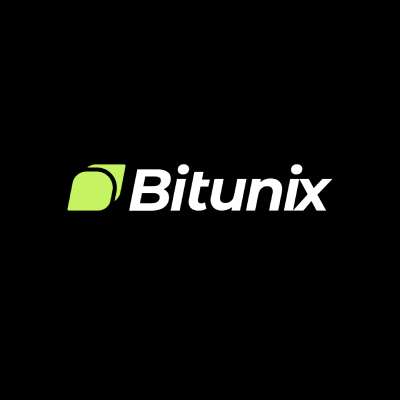Was halten Sie von Unichain: Werden die Top-DeFi-Anwendungen Ethereum L2 ablösen oder stärken?
Original author: Haotian (X: @tme l0 211 )
What do you think of @Uniswaps upcoming launch of DeFi-specific layer 2 — Unichain? I think the public opinion is in an uproar, and it is interpreted as the top DeFi applications defecting from Ethereum. Previously, dYdXs independent application chain and MakerDAOs Endgame as NewChain had caused heated discussions.
In fact, Uniswap’s independent chain plan cannot be considered a defection, but rather a catalyst to boost Ethereum layer 2. Why? Next, let me talk about my opinion:
1) dYdX built an independent chain based on the Cosmos IBC architecture, and MakerDAO intends to build an independent chain close to Solana. They are similar in nature, and both are hindered by the performance bottleneck of the Ethereum chain. Ethereums Gas Limit determines that a block can only process more than a thousand transactions, and the performance of the layer 2 chain is limited by the main networks Rollup contract processing capabilities even if it is expanded off-chain. Therefore, dYdX and MakerDAO ultimately chose independent consensus chains. I have previously systematically analyzed the reasons in an article
Uniswap has developed an expansion plan that combines off-chain preprocessing and on-chain since UniswapX. Therefore, even if it is built on-chain, it will continue to maintain a deep connection with Ethereum, and there is no qualitative defection.
The announcement by Uniswap labs that it will build Unichain layer 2 chain based on OP Stack speaks volumes. After all, layer 2 chain still complies with Ethereum’s Rollup-Centric grand strategy.
2) On the contrary, in my opinion, projects like Uniswap, which have phenomenal application genes and layout of layer 2 chains, will become a catalyst to break the current dilemma of layer 2 development.
On the one hand, Unichain is a layer 2 chain dedicated to expanding DeFi, which will be of great benefit to the development of DeFi in the current Ethereum layer 2 market, because currently the layer 2 chains of both OP-Rollup and ZK-Rollup camps have not stimulated the activity of DeFi applications.
Lending and borrowing are subject to trust doubts due to non-native token staking, and DEX is constrained by liquidity and user dispersion, making it difficult to generate synergy. Only a few platforms such as GMX have emerged as derivatives. The overall layer 2 chain environment is not friendly to the development of the DeFi ecosystem.
The new layer 2 @Metis L2 attempts to use native tokens and decentralized sequencer mining mechanisms to create an independent layer 2 economy, precisely to solve the problem of insufficient momentum for the development of layer 2 DeFi. However, most layer 2 Zeichenomics designs are still not friendly to DeFi.
Now, Uniswap, which accounts for more than 60% of the Ethereum mainnets transaction volume, is going to jump out to become a DeFi-specific layer 2 chain. It is hard not to have expectations;
On the other hand, Unichain chose the OP Stack superchain camp as layer 2 instead of layer 3 application chain. The difference is that layer 3 can further customize tokens and consensus mechanisms to be more independent and flexible, but layer 3 relies on layer 2 chains for interoperability and component sharing. The narrative is not mature enough at present and is more suitable for some unpopular and specific applications.
Giant applications like Uniswap have greater commercial potential as layer 2 chains and do not need to be on top of other layer 2 chains.
Of course, building a layer 3 chain might allow for the issuance of a new Gas Token, but building a layer 2 chain can empower the $UNI token with strong governance capabilities. It will also bring vitality to dormant layer 2 markets such as @arbitrum and @Starknet, and integrate a series of combination products and protocols such as Uniswap Wallet and UniswapX. This makes more sense than issuing new tokens out of thin air.
3) Unichain has two core features that deserve special mention:
1. A decentralized verification network will be introduced, which will add an extra layer of finality security confirmation.
This can be considered a middleware verification network similar to Eigenlayer AVS, but it is more like a Pre-Confirmation consensus network, which can provide a layer of security consensus protection for Unichains 1-second block generation and 250-millisecond sub-blocks, as well as the newly introduced TEE data privacy and MEV protection mechanisms. The most important thing is that the governance token UNI will be enabled, and nodes participating in verification must stake UNI tokens to work.
A layer 1 protocol governance token will become a new layer 2 staking and reward security consensus token. This role change is very unusual;
2. The upgrade content of the ERC 7683 proposal will be introduced, and the cross-chain intention standard will be proposed, providing a common interface for the cross-chain transaction execution system.
Simply put, it defines the cross-chain order information standard, including basic information such as who wants to trade, what to trade, and the transaction deadline. After the unified framework, different chains can collaborate to process the same order.
Obviously, Unichain is going to make a big deal about the cross-chain operability issue. By leveraging Uniswaps huge user base and liquidity siphon effect, Unichain is bound to attract a large number of DeFi applications. If Unichain attracts a large number of application ecosystems, it will not be too late to judge whether layer 2 Rollup will be falsified.
4) As for whether the original Uniswap protocol on the Ethereum mainnet will be affected after Unichain goes online, many people are worried. I personally think it will not be. After all, the business layout of Uniswap Labs and the development of the Uniswap open source decentralized protocol have long been parallel. Even if Unichain is launched, the original Uniswap protocol will not be affected.
If we have to say what the impact is, it is only one. Unichain will compete with other layer 2s as a new layer 2, and ultimately boost the overall weight of the layer 2 market.
At present, Unichain has a first-mover advantage in terms of application prosperity and user activity due to the influence of Uniswap wallet and brand effect. If the Uniswap siphon effect becomes prominent in the later stage, most users and traffic will be deposited on layer 2, which will also complete the Rollup-centric strategic vision of the entire Ethereum.
über.
Finally, I would like to emphasize again that Uniswap labs layout in chain building is definitely a big boon to the Ethereum ecosystem. We especially look forward to its market catfish effect as a disruptor in layer 2.
As for whether the Unichain chain is meaningful, it depends on the perspective from which it is judged. From a pure application perspective, @VitalikButerin is right to say that it is meaningless, but if considered from a business strategy perspective, it has long been known that Uniswap is not satisfied with just being an application. No matter what it does, as long as it is within the Ethereum roadmap plan, it will complement each other.
This article is sourced from the internet: What do you think of Unichain: Will the top DeFi applications defect or boost Ethereum L2?
Original author: 0x Maiaa, BeWater Research With the launch of the first phase of the Babylon mainnet a month ago, the launch of BTC LST on Pendle, and the launch of various BTC packages, market attention has been constantly brought back to BTCFi. The following content will cover the recent major updates on BTC (re)staking and BTC-pegged assets: BTC (Re)staking: The importance of ecological strategy to BTC LST Pendle is coming to BTCFi SatLayer joins the BTC re-staking market competition BTC anchored assets: Coinbase Launches cbBTC WBTC’s multi-chain expansion FBTC’s aggressive expansion 1/ Current BTC LST competition situation After Babylon Stage 1 quickly reached the 1000 BTC cap, competition among BTC LSTs continued to heat up, with all parties vying for the interest-earning entry point for staking BTC and its…







